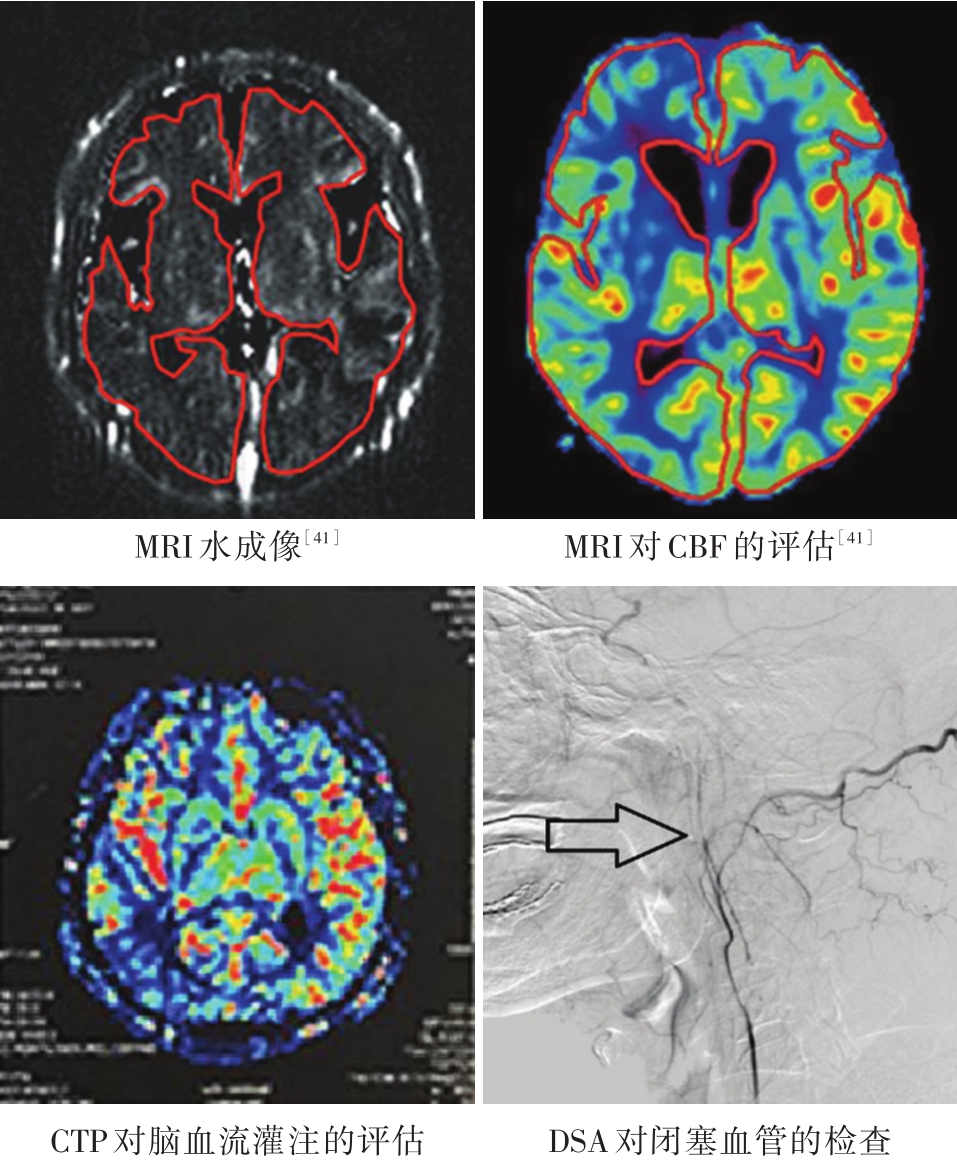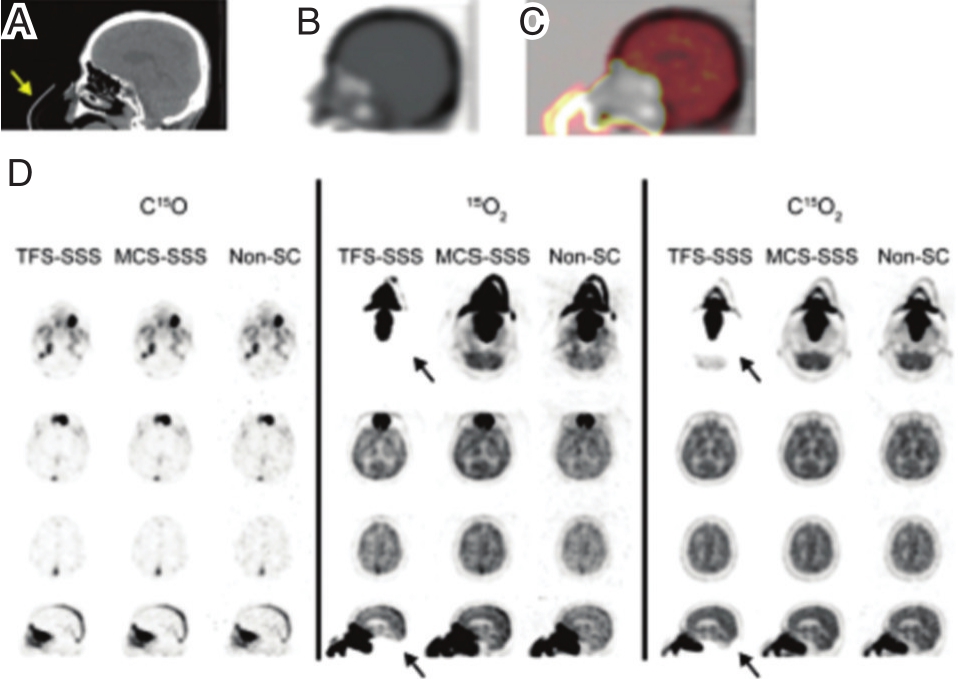

岭南现代临床外科 ›› 2020, Vol. 20 ›› Issue (02): 254-260.DOI: 10.3969/j.issn.1009-976X.2020.02.024
摘要:
美国每年因颈内动脉(ICA)闭塞引起的缺血事件约 15 000~20 000[1],其发生率约为 0.06/‰,我国目前尽管没有明确的发病率统计数字,但估计的发病率很高[2]。一部分ICA闭塞是慢性的,但如何定义慢性ICA闭塞尚不明确,以往研究以临床和影像学资料将病程持续超过4周的闭塞称为慢性ICA闭塞。计算机断层扫描血管造影(CTA)可以区分慢性闭塞与急性闭塞,急性ICA闭塞在CTA表现为“颈动脉环征”(ICA中存在低密度和/或颈动脉壁内形成对比)[3]。心血管医学的另一项研究提出ICA慢性完全闭塞(CTO)的病程应为至少3个月,甚至可能超过6个月[4]。
目前如果药物治疗失败或作为高危患者的预防性治疗手段,应考虑对ICACTO进行手术治疗[5]。ICACTO有多种治疗方法。颈动脉闭塞手术研究(COSS)于2011年进行了一项随机对照试验证明了以往的颈外动脉-颈内动脉搭桥术无效[6]。尽管如此ICACTO仍需要进行血管再通,部分患者可能由于侧支代偿不足或栓子脱落而发展为脑梗塞[7]。此外,部分ICACTO患者发展过程中没有明显的神经系统功能障碍,这些隐匿性的血管闭塞可能会导致严重的后果[8]。
近年来,外科医生已通过血管再通(CEA和血管内治疗)来治疗ICACTO。由于这些技术相对不成熟,因此干预的风险通常大于收益,疗效不理想。近年来技术的发展和复合手术的出现为治疗ICACTO提供了新的选择,并且成功率逐渐提高[9]。尽管如此,关于ICACTO的治疗方法仍具有争议。因此,本报告回顾了2017年12月6日之前发布的可用文献。查阅PubMed和Web of Science数据库中“颈内动脉慢性闭塞”的相关研究和报道,经筛选后进行复习。本文旨在回顾文献并根据现有文献和个人经验总结目前对ICACTO的理解。
ICACTO的自然病程尚不明确,根据结果分为以下几类:①侧支代偿充分,脑血管储备(CVR)不会受到损害。ICACTO可以在没有临床症状的情况下保持稳定状态[10];闭塞的ICA被认为是“安全动脉”,它几乎不会引起任何症状。缺血事件的发生率较低,约为每年2%~8%[11];②在侧支代偿不够的情况下,CVR受影响。ICACTO可能导致脑组织闭塞侧出现新的持续性低灌注性梗塞(多见于大脑中动脉)。在这种情况下,缺血事件的风险可能高达每年30%[12];③在有效的侧支循环补偿的情况下,伴有狭窄的颈总动脉或外颈动脉的栓子,近端或远端ICA残端的栓子或患病的对侧动脉的栓子,最终进入侧支循环和脑灌注不足区域[13]。即使经过最佳药物治疗,患者仍存在患侧缺血事件反复发生的风险;④在极少数情况下,患者闭塞血管经过 3 个月后自行再通[14]。Morris-Stiff[18]曾报道这种自发性血管再通率约为10%,明显高于早期的研究(2.3%)[15]。这种自发性血管再通在增加血管闭塞侧血流量的同时也会增加缺血事件的发生[16]。风险增加的主要原因是病理性再通通常与颈动脉狭窄相关,这增加了栓子脱离的可能性,因此需要进一步治疗以防止再通后栓子脱落[17]。
ICACTO中血流动力学的改变与否取决于大脑侧支代偿[18]。脑侧支循环的代偿是影响脑缺血事件最重要的关键因素[19]。
大血管代偿:ICACTO形成后血管闭塞处灌注压力降低[20],此时相通的动脉因压力差改变立即形成侧支循环代偿,包括大血管急性代偿和次级侧支(例如同侧眼动脉,同侧后交通动脉,前交通动脉和颈侧侧交通支)进行慢性补偿,当患者存在有效的软脑膜侧支循环和两种以上侧支时预后通常较好[21]。
微循环代偿:CVR是指脑血管刺激舒张后后增加的CBF[22]。ICACTO患者的CVR下降,增加了缺血性事件的风险,CVR分级可用于预测卒中风险[23]。在正常情况下,CVR不受损害(0级)[24]。CVR受损可分为三个级别:在Ⅰ级血流动力学异常中,血管通过自动调节代偿仍然能够维持正常的CBF,且氧摄取分数(OEF)仍然正常;在Ⅱ级血流动力学异常即血管自动调节代偿后CBF仍下降,然而,通过提供的血液供应增加的OEF会发生脑代谢补偿。在Ⅲ级血流动力学异常中,CBF和OEF均降低至局部缺血并最终导致梗死[25]。
ICACTO的诱因很多。年轻患者通常是由于颈动脉的慢性夹层闭塞,远端多位于颈内动脉岩骨段,老年患者的闭塞通常是由动脉粥样硬化引起的,主要发生在近端,由于该部位低剪切应力,血流淤积和血流分离的复杂血液动力学,导致ICA的变化[26]。动脉粥样硬化性闭塞在颈动脉闭塞患者缺血性卒中约占15%~25%[27]。此外,放疗还可能导致颈动脉慢性阻塞[28]。
ICACTO患者可能无症状或引起波动的临床症状,包括反复发作的短暂性脑缺血发作或轻度/重度脑卒中,主要取决于患者的侧支循环和与血流动力学因素相关的脑血管反应性[29]。
无临床症状部分ICACTO患者可以通过有效的侧支代偿提供足够的动脉血以满足脑组织的需求[30]。这些脑血流动力学损害程度较低及具有有效CVR功能的I期病例预后良好[31]。
脑灌注不足:某些代偿性侧支循环不良的ICACTO病例可能会出现缺血症状[32]。脑缺血提示血压相关的血流动力学改变形成的侧支血流不足导致脑缺血[33]。可逆的低灌注通常以反复的短暂性脑缺血发作为特征,严重的表现为轻度/重度脑卒中[34]。
栓子脱离:部分具有足够的侧支代偿的ICACTO患者会因为脱落的栓子引起脑梗塞,脱落的栓子主要来源于狭窄的颈总动脉或颈外动脉,ICA近端或远端,ICA残端或对侧动脉[35]。
认知功能障碍:ICACTO可能仅表现为认知功能障碍,包括精神运动速度、执行功能和工作记忆的下降[36]。在这些患者中,脑白质中N-乙酰天门冬氨酸的水平下降,提示存在慢性神经元损伤[37]。这些病理不仅会影响同侧脑组织,还会影响对侧[38]。ICACTO治疗成功后患者整体认知功能以及注意力和精神运动处理速度会明显改善[39]。
近年来影像技术的提高了对血流动力学缺血、侧支循环不良以及复发性脑卒中等疾病的诊断[40]。
血管形态和血流对于ICACTO患者首先进行CT或磁共振成像(MRI)以确定是否存在出血或梗塞。同时,应进行灌注CT和MRI(图1)检查以评估脑缺血的发生和严重程度[41]。灌注CT或MRI常常可以识别出灌注-扩散不匹配,其特点是ICA区域的脑灌注严重延迟而局部脑血容量及弥散加权成像无异常[42]。相对于未受影响的脑半球灌注的延迟可能达6秒或更长(图2)[43]。

图1 MRI水成像、MRI灌注成像及CT灌注成像可用于评估脑组织血流灌注情况,DSA可用于评估颅内血管病变包括狭窄、闭塞、畸形等

图2 PETCT对CBF和CBV的评估[53]
CT成像(A),μ-成像(B),将μ-成像和C15O2PET成像后期处理后得到(C)和PET成像(D):(D)水平面(第1-3行)和矢状面(第4行)C15O,15O2和C15O2 PET的图像,用于评估大脑半球灌注和扩散情况
同时也应行CTA,磁共振血管造影,数字减影血管造影和超声检查对患者进行评估[44]。这些检查可以直接测量闭塞动脉的长度,阻塞动脉远端血流反流节段,闭塞段ICA末端的形状以及侧支循环的代偿等[45]。此外,可以进行高分辨率MRI检查以对闭塞颈动脉进行评估以提供更详细的资料[46]。
CVR评估CVR是评估ICACTO至关重要的方法。CVR已被明确为缺血性卒中的预测因子[47]。CVR可以根据以下公式计算:CVR=(CBFstimulate-CBFrest)/CBFrest×100%。经颅多普勒研究通常用于评估血管反应性,并建议在ICACTO患者中,屏气指数<0.69与随后发生中风的高风险相关[48]。
此外,CVR可以通过灌注CT或MRI吸入8%的CO2或注射乙酰唑胺来测量,CVR损害的临界点为10%。如果CVR低于10%,则会增加脑梗死的风险[49]。某些新颖的MRI成像方式也可用于检查CVR,包括血液氧合水平依赖性(BOLD)MRI或乙酰唑胺增强的动态BOLD成像[50]。
OEF评估:有研究认为是OEF是对ICACTO是否行血管再通手术最有必要的指征[51]。正电子发射断层扫描(PET)是测量 OEF[52]的金标准,当患侧/对侧OEF比率大于1.13则需要进行脑血管再通。此外CT灌注的平均通过时间是PET测量的OEF的最佳关联,因此也提供了一种有效的OEF测量方法[53]。
对于无症状的ICACTO和I期血流动力学衰竭的无症状患者是否应进行血管再通存在争议[33]。但是,对于Ⅱ期或Ⅲ期血流动力学衰竭的症状患者,建议进行血管再通[54]。
临床症状:主要临床症状包括短暂性脑缺血发作或局部缺血性卒中,在颈动脉闭塞的同侧半球颈动脉区域出现轻度至中度永久性缺血性神经功能缺损,发生于120天内。
OEF比值增高:PET是测量OEF评估脑血流量的金标准。COSS已经将OEF比值作为ICACTO再通治疗的重要依据;当患侧/对侧OEF比大于1.13时建议手术[6],该类患者多为II期血流动力学衰竭的患者,因为II期血流动力学衰竭会导致血管储备下降,同时OEF升高[55]。通过PET测量的OEF是有症状患者随后中风的有效预测指标[12]。
闭塞血管远端反流节段:ICACTO再通治疗关键在于评估闭塞远端反流节段。反向血流至少应到达眼动脉水平,最理想的是达到ICA岩骨段[29]。如果影像学证实同时伴有颈内动脉颅外段闭塞会增加血管内介入治疗的难度[56],此时需考虑复合手术进行血管再通。
ICACTO的治疗包括药物治疗、CEA、血管内治疗、复合手术以及颈外动脉-颈内动脉(EC-IC)搭桥手术[57]。
保守治疗:ICACTO代偿充分且血流动力学稳定时可以药物保守治疗[58]。或拒绝手术治疗的患者采用药物治疗。常用药物包括抗血小板聚集药,包括阿司匹林、氯吡格雷或联合用药[59]。但药物治疗只能降低卒中风险,不能彻底治疗ICACTO。
CEA作为一种成熟的治疗颈动脉闭塞的方法同样可以用来治疗ICACTO[60]。对于闭塞远端反流节段到达颅底的患者可采用CEA[61]。但对于闭塞节段复杂或颅内动脉存在血栓时会影响CEA治疗效果。Thompson对118例CEA治疗的ICACTO患者进行了13年的随访,仅有41%实现了再通[62]。
血管内治疗:与CEA相比,血管内治疗不受颅骨限制。尽管血管再通方法很多,支架置入术被认为是最有效的方法[24]。2016年,Chen等[29]对138例ICA的CTO连续患者进行了尝试的腔内手术,发现技术成功率为61.6%。血管内治疗的缺点在于球囊扩张或支架释放时,血栓可能会脱落而阻塞远端血管[63]。因此需要采取措施保护颈总动脉,颈外动脉和ICA[64]。
复合手术近年来手术室条件的更新和发展提高了复合手术的可行性[65]。复合手术可以将近端ICA的CEA与远端ICA的血管内血管成形术相结合,实现更高的成功率[66]。复合手术是指首先在ICA的颅外段行CEA,然后通过血管内治疗远端病变血管(海绵窦或眼动脉)[67]。复合手术相对安全,有助于预防血栓脱落。
EC-IC 搭桥:ICACTO 可以按照 COSS[6,68]中的测试通过EC-IC搭桥进行治疗。但EC-IC搭桥通常将颞浅动脉连接到大脑中动脉,属于低流量搭桥,可能会存在血流量不足的情况[69]。同时与单纯药物治疗相比,EC-IC搭桥术加药物治疗并不能降低2年内患侧缺血性卒中的风险[6]。COSS中EC-IC搭桥失败的原因可能是未能选择缺血事件高风险的患者。
总体而言,未来的研究应应对开发和研究针对疾病过程的新型外科治疗方法所面临的挑战,并通过随机对照试验确定此类治疗方法的临床获益[70]。
影响再通成功率的因素包括颈动脉闭塞的持续时间、程度和原因。颈动脉钙化和斑块形成的存在;闭塞远端反向血流节段;以及治疗手段的选择。
闭塞持续时间影响再通成功率最主要的因素是血管闭塞持续的时间。对于急性和亚急性的ICA阻塞,因为ICA中的血栓质地相对较软,介入手术和复合手术难度较低。对于ICACTO,CEA手术偶尔会直接拉出ICA远端的血栓使血管再通[71]。待血压和血流恢复后,萎缩的远端血管会逐渐恢复至正常的管径和形态[72]。随着ICA闭塞持续时间的增加,ICA闭塞处逐渐完全纤维化而阻碍了微导丝穿过闭塞的动脉,增加了再通的难度和风险[73]。
闭塞的长度和节段:ICACTO持续时间越长再通的成功率越低[74]。闭塞段较长会导致导丝难以穿过闭塞节段形成假内腔[75]。2016年,Chen等人[29]发现,闭塞段长于5 cm者(59.7%)再通成功率显著低于闭塞段短于5 cm者(73.7%)。闭塞节段远端位于ICA岩骨段、海绵窦段、床突段、眼动脉段及后交通段时再通成功率分别为93%、80%、73%、33%和29%。这表明ICA闭塞的位置越低,再通的成功率就越高。
此外,斑块成分、术前详细全面的评估、术前抗凝药物的使用等因素也会影响血管再通的成功率。
2010年,Terada等[76]治疗了15例病例,其中14例在术后6至12个月随访发现血管再通成功,证明了血管再通治疗ICACTO的可行性和有效性。影响ICACTO预后的主要问题是再通后是否会出现再次闭塞。有研究指出闭塞达颈内动脉床突段患者一年内的再闭塞率是91%,而闭塞未达颈内动脉床突段患者一年内的再闭塞率为0%[12]。复合手术可以提高血管再通的成功率。与药物治疗相比,ICACTO血管再通可以有效减少脑梗塞的发生,有效改善整体认知功能和神经功能[77]。
对于ICACTO患者,在存在明确手术指征的情况下应首选血管再通。根据患者情况可采取血管内介入,CEA或复合手术。复合手术可能更能代表目前临床治疗ICACTO的趋势,因为晚期CEA可以去除颈动脉粥样硬化斑块,从而降低了进一步介入再通的难度。成功和稳定的血管再通可以改善缺血症状,降低缺血事件的发生,提高患者的生活质量。
[1] Otite FO,Khandelwal P,Malik AM,Chaturvedi S.National Patterns of Carotid Revascularization Before and After the Carotid Revascularization Endarterectomy vs Stenting Trial(CREST)[J].JAMA Neurol,2018,75(1):51-57.
[2] Ma Y,Gu Y,Tong X,et al.The Carotid and Middle cerebral artery Occlusion Surgery Study(CMOSS):a study protocol for a randomised controlled trial[J].Trials,2016,17(1):544.
[3] Michel P,Ntaios G,Delgado MG,et al.CT angiography helps to differentiate acute from chronic carotid occlusion:the“carotid ring sign”[J].Neuroradiology,2012,54(2):139-146.
[4] Iwata T,Mori T,Tajiri H ,et al.Long-term Angiographic and Clinical Outcome Following Stenting by Flow Reversal Technique for Chronic Occlusions Older Than 3 Months of the Cervical Carotid or Vertebral Artery[J].Neurosurgery,2012,70(1):82-90.
[5] Usachev DY,Lukshin VA,Shmigel′skiy AV,Akhmedov AD.An anastomosis between the internal carotid and vertebral arteries in the treatment of a patient with bilateral carotid arteries occlusions[J].Zh Vopr Neirokhir Im N N Burdenko,2016,80(2):72-77.
[6] Esposito G,Amin-Hanjani S,Regli L.Role of and Indications for Bypass Surgery After Carotid Occlusion Surgery Study(COSS)?[J].Stroke,2016,47(1):282-290.
[7] Grubb RL,Powers WJ,Clarke WR,et al.Surgical results of the Carotid Occlusion Surgery Study[J].J Neurosurg,2013,118(1):25-33.
[8] Rocha M,Delfyett WT,Agarwal V,et al.Diagnostic accuracy of emergency CT angiography for presumed tandem internal carotid artery occlusion before acute endovascular therapy[J].J Neurointerv Surg,2018,10(7):653-656.
[9] Lee CW,Lin YH,Liu HM,et al.Predicting procedure successful rate and 1-year patency after endovascular recanalization for chronic carotid artery occlusion by CT angiography[J].Int J Cardiol,2016,221:772-776.
[10] Powers WJ,Derdeyn CP,Fritsch SM,et al.Benign prognosis of never-symptomatic carotid occlusion[J].Neurology,2000,54(4):878-882.
[11] Cheema S,Clarke-Moloney M,Kavanagh EG,et al.Natural history and clinical outcome of patients with documented carotid artery occlusion[J].Iri J Medi Sci,2007,176(4):289-291.
[12] Grubb RL,Derdeyn CP,Fritsch SM,et al.Importance of Hemodynamic Factors in the Prognosis of Symptomatic Carotid Occlusion[J].JAMA,1998,280(12):1055-1060.
[13] Cote R,Barnett HJ,Taylor DW.Internal carotid occlusion:a prospective study[J].Stroke,1983,14(6):898-902.
[14] Delgado MG,Vega PP,Lahoz CH,et al.Late spontaneous recanalization of symptomatic atheromatous internal carotid artery occlusion[J].Vascular,2015,23(2):211-216.
[15] Shchanitsyn IN,Maksyushina TD,Titova YI,et al.Spontaneous recanalization of chronic occlusion of the internal carotid artery[J].Angiol Sosud Khir,2015,21(2):124-135.
[16] Yang C,Bogiatzi C,Spence JD.Risk of stroke at the time of carotid occlusion[J].JAMA Neurol,2015,72(11):1261-1267.
[17] Matic P,Ilijevski N,Radak S,et al.Recanalization of Chronic Carotid Occlusion:Case Report and Review of the Literature[J].Vascular,2009,17(5):281-283.
[18] Surikova I,Meisel S,Siebler M,et al.Significance of the perfusion-diffusion mismatch in chronic cerebral ischemia[J].J Magn Reson Imaging,2006,24(4):771-778.
[19] David S Liebeskind,George A Cotsonis,Jeffrey L Saver,et al.Collaterals Dramatically Alter Stroke Risk in Intracranial Atherosclerosis[J].Ann Neurol,2011,69(6):963-974.
[20] Pipinos II,Pisimisis GT,Burjonrappa SC,et al.One patent intracranial collateral predicts tolerance of flow reversal during carotid angioplasty and stenting[J].Ann Vascular Surg,2009,23(1):32-38.
[21] Sundaram S,Kannoth S,Thomas B,et al.Collateral assessment by ct angiography as a predictor of outcome in symptomatic cervical internal carotid artery occlusion[J].AJNR Am J Neuroradiol,2016,38(1):52-57.
[22] Choi HJ,Sohn CH,You SH,et al.Can Arterial Spin-Labeling with Multiple Postlabeling Delays Predict Cerebrovascular Reserve?[J].Am J Neuroradiol,2018,39(1):84-90.
[23] Gupta A,Chazen JL,Hartman M.Cerebrovascular Reserve and Stroke Risk in Patients With Carotid Stenosis or Occlusion:A Systematic Review and Meta-Analysis[J].J Vascular Surg,2013,57(6):1720.
[24] Quilitz B,Rimpel J,Mehdorn M,et al.Cerebrovascular Reserve Capacity(CRC)in Carotid Artery Disease:A Routine Test in Selection for Surgical Treatment?[J].Thorac Cardiovasc Surg,1988,36(4):217-220.
[25] Alexander S,Ralf D,Waltraud P,et al.T2-Imaging to Assess Cerebral Oxygen Extraction Fraction in Carotid Occlusive Disease:Influence of Cerebral Autoregulation and Cerebral Blood Volume[J].PLoS ONE,2016,11(8):e0161408.
[26] Harrison M J G,Marshall J.The finding of thrombus at carotid endarterectomy and its relationship to the timing of surgery[J].Br J Surg,1977,64(7):511-512.
[27] Lee,Chung-Wei,Lin,et al.Predicting procedure successful rate and 1-year patency after endovascular recanalization for chronic carotid artery occlusion by CT angiography[J].Int J Cardiol,221:772-776.
[28] Nico L,Cester G,Viaro F,et al.Endovascular recanalization of the common carotid artery in a patient with radio induced chronicocclusion[J].BMJCaseRep,2016,pii:bcr2016012722.
[29] Chen YH,Leong WS,Lin MS,et al.Predictors for Successful Endovascular Intervention in Chronic Carotid Artery Total Occlusion[J].JACC Cardiovasc Interv,2016,9(17):1825-1832.
[30] Shih YT,Chen WH,Lee WL,et al.Hybrid Surgery for Symptomatic Chronic Total Occlusion of Carotid Artery:A Technical Note[J].Neurosurgery,2012,73(1 Suppl Operative):117-123.
[31] Komiyama M,Yoshimura M,Honnda Y,et al.Percutaneous angioplasty of a chronic total occlusion of the intracranial internal carotid artery.Case report[J].Surg Neurol,2006,66(5):513-518.
[32] Heck D.Endovascular Intervention in Chronic Total Carotid Artery Occlusion:It Can be Done,But When Should it be Done?[J].JACC Cardiovasc Interv,2016,9(17):1833-1834.
[33] Hauck EF,Ogilvy CS,Siddiqui AH,et al.Direct endovascular recanalization of chronic carotid occlusion:should we do it?Case report[J].Neurosurg,2010,67(4):E1152-1159.
[34] Derdeyn CP,Grubb RL,Powers WJ.Indications for Cerebral Revascularization for Patients with Atherosclerotic Carotid Occlusion[J].Skull Base,2005,15(1):7-14.
[35] Casey K,Hitchner E,Lane B,et al.Contralateral microemboli following carotid artery stenting in patients with a contralateral internal carotid artery occlusion[J].J Vasc Surg,2013,58(3):794-797.
[36] Damania D,Kung TM,Jain M,et al.Factors associated with recurrent stroke and recanalization in patients presenting with isolated symptomatic carotid occlusion[J].Eur J Neurol,2016,23(1):127-132.
[37] Rutgers DR,Van Osch MJP,Kappelle LJ,et al.Cerebral hemodynamics and metabolism in patients with symptomatic occlusion of the internal carotid artery[J].Stroke,2003,34(3):648-652.
[38] Sam K,Small E,Poublanc J,et al.Reduced Contralateral Cerebrovascular Reserve in Patients with Unilateral Steno-Occlusive Disease[J].Cerebrovasc Dis,2014,38(2):94-100.
[39] Fan YL,Wan JQ,Zhou ZW,et al.Neurocognitive Improvement After Carotid Artery Stenting in Patients With Chronic Internal Carotid Artery Occlusion:A Prospective,Controlled,Single-Center Study[J].Vasc Endovascular Surg,2014,48(4):305-310.
[40] Hage ZA,Behbahani M,Amin-Hanjani S,Charbel FT.Carotid Bypass for Carotid Occlusion[J].Curr Atherosclerosis Rep,2015,17(7):36.
[41] Ida K,Akaki S,Sei T,et al.Cerebral perfusion MR imaging using FAIR-HASTE in chronic carotid occlusive disease:comparison with dynamic susceptibility contrast-perfusion MR imaging[J].Acta Medica Okayama,2006,60(4):215-221.
[42] Lassalle L,Turc G,Tisserand M,et al.ASPECTS(Alberta Stroke Program Early CT Score)Assessment of the Perfusion-Diffusion Mismatch[J].Stroke,2016,47(10):2553-2558.
[43] Miyazawa N,Arbab AS,Umeda T,Akiyama I.Perfusion CT investigation of chronic internal carotid artery occlusion:comparison with SPECT[J].Clin Neurol Neurosurg,2005,108(1):11-17.
[44] Mylonas SN,Antonopoulos CN,Moulakakis KG,et al.Management of patients with internal carotid artery near total occlusion:an updated meta-analysis[J].Ann Vascular Surg,2015,29(8):1664-1672.
[45] Lee JI,Jander S,Oberhuber A,et al.Stroke in patients with occlusion of the internal carotid artery:options for treatment[J].Exp Rev Neurother,2014,14(10):1153-1167.
[46] Yoshida K,Fukumitsu R,Kurosaki Y,et al.The association between expansive arterial remodeling detected by high-resolution MRI in carotid artery stenosis and clinical presentation[J].J Neurosurg,2015,123(2):434-440.
[47] Kuroda S,Houkin K,Kamiyama H,et al.Long-Term Prognosis of Medically Treated Patients With Internal Carotid or Middle Cerebral Artery Occlusion:Can Acetazolamide Test Predict It? Editorial Comment:Can Acetazolamide Test Predict It?[J].Stroke,2001,32(9):2110-2116.
[48] Douvas I,Moris D,Karaolanis G,et al.Evaluation of cerebrovascular reserve capacity in symptomatic and asymptomatic internal carotid stenosis with Transcranial Doppler[J].Physiol Res,2016,65(6):917-925.
[49] Yang F,Shi W,Shi J,et al.Assessment of cerebrovascular reserve in unilateral middle cerebral artery stenosis using perfusion CT and CO2 inhalation tests[J].Int J Neurosci,2016,127(4):1-18.
[50] Wu J,Dehkharghani S,Nahab F,Qiu D.Acetazolamide-augmented dynamic BOLD(aczBOLD)imaging for assessing cerebrovascular reactivity in chronic steno-occlusive disease of the anterior circulation:An initial experience [J].Neuroimage Clin,2016,13:116-122.
[51] Kawai N,Kawanishi M,Shindou A,et al.Cerebral blood flow and metabolism measurement using positron emission tomography before and during internal carotid artery test occlusions:feasibility of rapid quantitative measurement of CBF and OEF/CMRO(2)[J].Int Neuroradiol,2012,18(3):264-274.
[52] Suzuki T,Ogasawara K,Kuroda H,et al.Comparison of early and late images on 123I-iomazenil SPECT with cerebral blood flow and oxygen extraction fraction images on PET in the cerebral cortex of patients with chronic unilateral major cerebral artery occlusive disease[J].Nucl Med Commun,2012,33(2):171-178.
[53] Magota K,Shiga T,Asano Y,et al.Scatter Correction with Combined Single-Scatter Simulation and Monte Carlo Simulation Scaling Improved the Visual Artifacts and Quantification in 3-Dimensional Brain PET/CT Imaging with15O-Gas Inhalation[J].J Nucl Med,2017,58(12):2020-2025.
[54] Kuroda S,Kawabori M,Hirata K,et al.Clinical significance of STA-MCA double anastomosis for hemodynamic compromise in post-JET/COSS era[J].Acta Neurochir(Wien),2014,156(1):77-83.
[55] Kashiwazaki D,Kuroda S,Terasaka S,Iwasaki Y.Detection of hemodynamic transient ischemic attack during hemodialysis with near-infrared monitoring in a patient with internal carotid artery occlusion[J].Surg Neurol,2007,68(3):292-294.
[56] Yu LB,He H,Zhao JZ,et al.More Precise Imaging Analysis and Diagnosis of Moyamoya Disease and Moyamoya Syndrome Using High-Resolution Magnetic Resonance Imaging[J].World Neurosurgery,2016,96:252-260.
[57] Radak DJ,Tanaskovic S,Ilijevski NS,et al.Eversion carotid endarterectomy versus best medical treatment in symptomatic patients with near total internal carotid occlusion:a prospective nonrandomized trial[J].Ann Vasc Surg,2010,24(2):185-189.
[58] Gomensoro JB.Joint study of extracranial arterial occlusion:VIII.clinical-radiographic correlation of carotid bifurcation lesions in 177 patients with transient cerebral ischemic attacks[J].JAMA,1973,224(7):985-991.
[59] Markus HS,Droste DW,Kaps M,et al.Dual antiplatelet therapy with clopidogrel and aspirin in symptomatic carotid stenosis evaluated using doppler embolic signal detection:the Clopidogrel and Aspirin for Reduction of Emboli in Symptomatic Carotid Stenosis(CARESS)trial[J].Circulation,2005,111(17):2233-2240.
[60] Blaisdell FW,Hall AD,Thomas AN.Surgical Treatment of Chronic Internal Carotid Artery Occlusion By Saline Endarterectomy[J].Ann Surg,1966,163(1):103-111.
[61] Greiner C,Wassmann H,Palkovic S,Gauss C.Revascularization procedures in internal carotid artery pseudo-occlusion[J].Acta Neurochir(Wien),2004,146(3):237-243.
[62] Thompson JE,Austin DJ,Patman RD.Carotid Endarterectomy for Cerebrovascular Insufficiency:Long-Term Results in 592 Patients Followed up to Thirteen Years[J].Surg Clin North Am,1986,66(2):233-253.
[63] Ho KW,Min PK,Jun KD,Shim WH.Successful Carotid Stenting for Chronic Total Occlusion of the Internal Carotid Artery[J].Korean Circ J,2010,40(6):288-291.
[64] Shojima M,Nemoto S,Morita A,et al.Protected Endovascular Revascularization of Subacute and Chronic Total Occlusion of the Internal Carotid Artery[J].AJNR Am J Neuroradiol,2010,31(3):481-486.
[65] Marino M,Kasemi H,Di Angelo CL,et al.Hybrid Treatment of Symptomatic Chronic Isolated Carotid Bifurcation[J].Ann Vasc Surg,2014,28(7):1795.e7-1795.e10.
[66] Pinter C,Cagiannos C,Bakoyiannis CN,Kolvenbach R.Hybrid treatment of common carotid artery occlusion with ringstripper endarterectomy plus stenting[J].J Vasc Surg,2007,46(1):135-139.
[67] Bozzay J,Broce M,Mousa AY.Hybrid Treatment of Extracranial Carotid Artery Disease[J].Vasc Endovascular Surg,2017,51(6):373-376.
[68] Nussbaum ES,Erickson DL.Extracranial-Intracranial Bypass for Ischemic Cerebrovascular Disease Refractory to Maximal Medical Therapy[J].Neurosurgery,2000,46(1):37-42.
[69] EC/IC Bypass Study Group.Failure of extracranial-intracranial arterial bypass to reduce the risk of ischemic stroke:Results of an international randomized trial[J].N Engl J Med,1985,313(19):1191-1200.
[70] Reynolds MR,Derdeyn CP,Grubb RL Jr,et al.Extracranialintracranial bypass for ischemic cerebrovascular disease:What have we learned from the Carotid Occlusion Surgery Study?[J].Neurosurg Focus,2014,36(1):E9.
[71] Hasegawa H,Inoue T,Tamura A,Saito I.Emergent intracranial surgical embolectomy in conjunction with carotid endarterectomy for acute internal carotid artery terminus embolic occlusion and tandem occlusion of the cervical carotid artery due to plaque rupture[J].J Neurosurg,2015,122(4):939-947.
[72] Hayakawa M,Sugiu K,Yoshimura S,et al.Effectiveness of staged angioplasty for avoidance of cerebral hyperperfusion syndrome after carotid revascularization[J].J Neurosurg,2019,18:1-11.
[73] Xu B,Liu R,Jiao L,Yu J.Carotid endarterectomy for in-stent restenosis:a case report and literature review [J].Biomed Rep,2017,7(2):128-132.
[74] Morino Y,Abe M,Morimoto T,et al.Predicting Successful Guidewire Crossing Through Chronic Total Occlusion of Native Coronary Lesions Within 30 Minutes:The J-CTO(Multicenter CTO Registry in Japan)Score as a Difficulty Grading and Time Assessment Tool[J].JACC Cardiovasc Interv,2011,4(2):213-221.
[75] Frenkel MB,Renfrow JJ,Singh J,et al.Combined interventional and surgical treatment of tandem middle cerebral artery embolus and internal carotid artery occlusion:case report[J].J Neurosur,2017,129(3):718-722.
[76] Terada T,Okada H,Nanto M,et al.Endovascular recanalization of the completely occluded internal carotid artery using a flow reversal system at the subacute to chronic stage[J].J Neurosur,2010,112(3):563-571.
[77] Huang CC,Chen YH,Lin MS,et al.Association of the Recovery of Objective Abnormal Cerebral Perfusion With Neurocognitive Improvement After Carotid Revascularization [J].J Am Coll Cardiol,2013,61(25):2503-2509.
Current study and management of chronic total occlusion of the internal carotid artery
中图分类号: